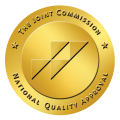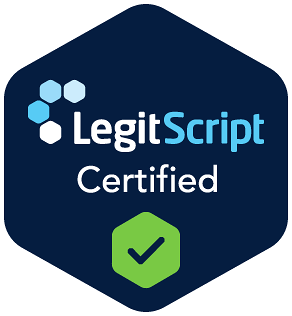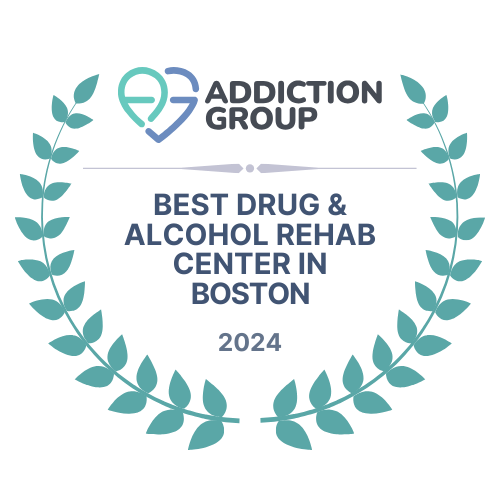Pain management can be a tricky road to navigate, especially for those in recovery from addiction. It’s important to find solutions that not only effectively manage pain but also support your sobriety journey. In this blog post, we’ll explore different strategies and options for navigating pain management in sobriety, helping you find what works best for you. Join us as we dive into this important topic and discover ways to prioritize both your health and your recovery.
Pain Management in Sobriety
Pain management is a crucial aspect of maintaining overall health and well-being, especially for those in recovery from substance abuse. However, navigating pain management while also staying sober can be a complex and challenging task.
In this section, we will explore the topic of pain management in sobriety in detail. We will discuss the unique challenges that individuals in recovery may face when dealing with chronic or acute pain, as well as potential solutions and strategies for managing pain without compromising sobriety.
The Link Between Pain and Substance Abuse
Many people who struggle with substance abuse also experience some form of physical or emotional pain. This can be due to underlying medical conditions, injuries, or trauma. Unfortunately, drugs or alcohol may have initially been used as a coping mechanism for managing this pain.
However, it is essential to recognize that substance use only provides temporary relief and often leads to further health complications and addiction. Therefore, addressing both physical and emotional pain becomes critical during the recovery process.
Challenges Faced in Pain Management During Sobriety
One of the significant challenges individuals may face when seeking help for managing their pain while sober is finding healthcare professionals who understand their unique needs. Many doctors may not be adequately trained on how to treat patients with a history of substance abuse effectively.
Moreover, many traditional methods for managing chronic or acute pain involve prescription opioids or other medications that can be highly addictive. These medications can pose severe risks for someone in recovery from addiction since they may trigger cravings and lead back to relapse.
Finding Solutions That Work for You
Fortunately, there are many alternative approaches to managing pain that do not involve medication use. These include physical therapy, acupuncture, chiropractic care, massage therapy, cognitive-behavioral therapy (CBT), mindfulness techniques such as meditation and yoga.
It is essential to work closely with a healthcare team consisting of professionals who understand your history of addiction and are knowledgeable in non-addictive pain management methods. This team may include a primary care physician, pain specialist, therapist, and other specialists as needed.
The Complexities of Managing Pain While in Recovery
Pain management can be a complicated issue for anyone, but it becomes even more challenging for those in recovery from substance abuse. The interplay between pain and addiction is complex, and finding effective solutions that work for individuals in recovery can be a difficult process.
One of the main complexities of managing pain while in recovery is the risk of relapse. Many prescription pain medications are highly addictive, and individuals in recovery may have a heightened sensitivity to them. This makes it essential to find alternative methods of pain management that do not involve potentially addictive substances.
Moreover, individuals in recovery may also struggle with the perceived stigma surrounding chronic pain. Some may feel shame or guilt for needing pain relief after seeking treatment for their addiction. This added emotional burden can make it challenging to find appropriate resources and support for managing their pain.
Another factor to consider when navigating pain management in sobriety is the potential impact on mental health. Chronic pain has been linked to depression, anxiety, and other mental health issues, which can pose a significant challenge for those in recovery from addiction. It is crucial to address both physical and psychological aspects of managing pain while also prioritizing overall well-being.
Furthermore, some individuals may have co-occurring conditions such as chronic pain and addiction, making it even more complicated to find suitable treatment options. These conditions often feed off each other, creating a vicious cycle that requires specialized care and support.
In addition to these challenges, many traditional approaches to managing chronic pain may not align with the principles of sobriety or abstinence from substance use. For example, relaxation techniques like meditation or yoga may involve certain mind-altering practices that could trigger cravings or lead an individual down the path towards relapse.
However daunting these complexities may seem, there are still solutions available for those in recovery who experience chronic pain. It’s essential to work closely with healthcare professionals who understand both addiction and chronic pain management and can offer personalized treatment plans that prioritize sobriety.
Alternative pain management methods, such as physical therapy, acupuncture, or mindfulness-based practices, may be effective for some individuals. Exploring non-pharmacological options can also help reduce the risk of relapse and promote overall well-being.
Managing pain while in recovery is a multifaceted issue that requires careful consideration and an individualized approach. By understanding the complexities involved and working closely with healthcare professionals, individuals in recovery can find solutions that effectively manage their pain without compromising their sobriety.
The Impact of Addiction on Pain Perception and Management
Addiction and chronic pain are two complex and often intertwined issues that have a significant impact on an individual’s physical, mental, and emotional well-being. The relationship between addiction and pain is a delicate one, as each can exacerbate the other in a vicious cycle. In this section, we will explore the impact of addiction on pain perception and management.
To begin with, addiction can significantly alter an individual’s perception of pain. As drugs or alcohol abuse leads to changes in brain chemistry and structure, it can affect the body’s ability to process pain signals correctly. This means that someone who struggles with substance abuse may experience heightened sensitivity to pain or a decreased ability to tolerate discomfort. As a result, individuals may turn to substances to cope with their physical discomfort, leading to further addiction issues.
Moreover, addiction can also negatively impact the effectiveness of traditional pain management methods. Many medications used for managing chronic pain carry a risk of dependence or misuse if not closely monitored. For individuals with underlying substance abuse problems, this poses an even greater danger as they may be more prone to developing an addiction to these medications.
On top of altering pain perception and reducing the efficacy of treatment options, addiction also presents unique challenges when it comes to managing chronic pain in sobriety. Individuals in recovery are often faced with difficult decisions about how best to manage their discomfort without relapsing into substance use. They must find alternative ways of coping with their symptoms while avoiding potential triggers for addictive behaviors.
Furthermore, research has shown that those struggling with both chronic pain and substance use disorder tend to have poorer treatment outcomes compared to those who only face one issue. This is because addressing one condition without considering the other may lead individuals down a path towards relapse or ongoing physical distress.
The impact of addiction on an individual’s perception and management of chronic pain cannot be underestimated. It alters how we feel physical discomfort and reduces our tolerance for it while making traditional pain management methods less effective. It also presents unique challenges for those in recovery, requiring a more comprehensive and integrated approach to address both issues simultaneously. In the following sections, we will explore some potential solutions that may help individuals navigate pain management in sobriety successfully.
Exploring Non-Medication Solutions for Pain Relief
Pain management can be a challenging aspect of sobriety, especially for those who have become accustomed to relying on medication as the primary form of relief. However, there are numerous non-medication solutions that can provide effective pain management while also supporting sobriety and overall well-being.
- Mind-Body Techniques: This category includes practices such as meditation, deep breathing exercises, and yoga. These techniques focus on creating mind-body awareness and promoting relaxation, which can help reduce stress and tension in the body that may contribute to pain. They also have the potential to improve mood and promote feelings of peace and contentment.
- Physical Therapy: For those dealing with chronic pain or injuries, physical therapy can be an effective non-medication solution. A physical therapist will work with you to create a personalized exercise plan that targets specific areas of pain or weakness in your body. These exercises can help strengthen muscles, increase flexibility, and improve overall function without relying on medication.
- Acupuncture: This traditional Chinese medicine practice involves inserting thin needles into specific points on the body to stimulate energy flow and promote healing. While there is limited scientific evidence to support its effectiveness for pain relief, many people report significant improvements in their symptoms after acupuncture sessions.
- Massage Therapy: Regular massage therapy has been shown to reduce muscle tension and decrease levels of the stress hormone cortisol in the body. It can also release endorphins – natural pain-fighting chemicals – leading to reduced discomfort and improved mood.
- Dietary Changes: What we eat plays a significant role in our overall health, including our experience of pain. Incorporating anti-inflammatory foods such as fatty fish (rich in omega-3s), leafy greens, berries, nuts and seeds into your diet may help alleviate chronic pain caused by inflammation.
- Herbal Supplements: Many herbs have been traditionally used for centuries for their pain-relieving properties. For example, turmeric and ginger have anti-inflammatory effects, while valerian can promote relaxation and improve sleep – which is essential for managing pain.
While these non-medication solutions can be highly effective in managing pain, it’s important to consult with a healthcare professional before incorporating them into your routine. Some techniques may not be suitable for certain medical conditions or may interact with medications you are taking.
Exploring non-medication solutions for pain relief is a crucial step in navigating pain management in sobriety. By incorporating these techniques into your wellness plan, you can support your recovery journey while effectively managing any discomfort that may arise. Remember, finding the right combination of approaches that work for you is key – so don’t be afraid to try different methods until you find what works best for your unique needs.
Meditation and Mindfulness Techniques
Meditation and mindfulness techniques have been used for centuries as a means of promoting relaxation, reducing stress, and improving overall well-being. These practices can also be incredibly beneficial for individuals in sobriety who are navigating pain management.
Meditation is a technique that involves focusing the mind on a particular object, thought, or activity to achieve a mentally clear and emotionally calm state. This practice has been shown to reduce symptoms of chronic pain by altering brain activity in areas associated with pain perception.
One type of meditation that has gained significant popularity in recent years is mindfulness meditation. This technique involves paying attention to the present moment without judgment and being fully aware of one’s thoughts, feelings, and sensations. As individuals in sobriety may experience increased levels of stress and anxiety while managing pain without the use of substances, incorporating mindfulness into their daily routines can help them stay grounded and cope with these emotions more effectively.
To start practicing meditation or mindfulness, find a quiet space where you won’t be disturbed for at least 10-15 minutes. Sit comfortably with your eyes closed or gaze softly at a fixed point if this feels more comfortable for you. Begin by focusing on your breath – notice the sensation of air entering your nostrils as you inhale and leaving your body as you exhale. If your mind starts to wander (which is completely normal!), gently bring it back to focus on your breath.
Another helpful meditation tool is visualization. This involves creating mental images that promote relaxation and positive thinking. For individuals experiencing physical pain, visualizing themselves being free from discomfort can be empowering and help alleviate some of their symptoms.
In addition to formal meditation practices, incorporating mindfulness throughout daily activities can also be beneficial. Eating mindfully by paying attention to flavors, textures, and sensations can help promote healthy eating habits – essential for overall well-being during recovery from substance abuse.
Taking mindful walks in nature or engaging in gentle yoga poses while paying attention to your body’s movements can also be helpful in managing pain and promoting relaxation.
Incorporating meditation and mindfulness techniques into daily routines can provide individuals in sobriety with powerful tools for managing pain. By practicing these techniques regularly, individuals can improve their overall well-being and enhance their recovery journey. Remember to be patient with yourself, as it may take time to feel the full benefits of these practices. With consistency and dedication, you will find solutions that work for you.
Physical Therapy and Exercise
Physical therapy and exercise are essential components of pain management in sobriety. As we know, chronic pain can greatly impact our daily lives and hinder our recovery journey. However, with the right approach to physical therapy and exercise, we can improve our overall well-being and manage our pain more effectively.
Firstly, it is important to understand that every individual’s experience with pain is unique. Therefore, a personalized approach to physical therapy and exercise is crucial for achieving optimal results. This means working closely with a healthcare professional to develop a tailored treatment plan that considers your specific needs and limitations.
One of the main goals of physical therapy is to improve mobility and reduce pain through exercises, stretches, and manual techniques. These techniques help strengthen muscles, increase flexibility, and release tension in affected areas. A physical therapist will also assess your posture and body mechanics to identify any imbalances or compensations that may be contributing to your pain.
In addition to in-person sessions with a physical therapist, incorporating regular exercise into your routine can also have significant benefits for managing pain in sobriety. Exercise releases endorphins, which are natural pain-relieving chemicals produced by the brain. It also helps build strength and endurance, making everyday activities less challenging.
When it comes to choosing an appropriate form of exercise for managing chronic pain in sobriety, low-impact activities such as swimming or cycling are often recommended. These exercises place less stress on the joints while still providing cardiovascular benefits. Yoga is another popular option as it combines stretching with mindfulness practices that can help alleviate both physical and mental discomfort.
It’s important to remember that consistency is key when it comes to reaping the benefits of physical therapy and exercise for pain management in sobriety. Making these activities a regular part of your routine will not only aid in reducing existing pain but also prevent future flare-ups.
It’s crucial to communicate openly with your healthcare team about any discomfort or concerns you may have during physical therapy or exercise. They can make necessary adjustments to your treatment plan to ensure it remains safe and effective for you.
Incorporating physical therapy and exercise into your pain management strategy in sobriety can lead to improved mobility, reduced pain levels, and increased overall well-being. Remember to work closely with your healthcare team and listen to your body’s needs for a successful recovery journey.
Acupuncture and Other Alternative Treatments
Acupuncture and other alternative treatments have been gaining popularity in recent years as non-pharmaceutical options for managing pain. These methods focus on the mind-body connection and aim to promote natural healing within the body.
One of the most well-known alternative treatments is acupuncture, which involves inserting thin needles into specific points on the body. This ancient Chinese practice is believed to stimulate the flow of energy or “qi” throughout the body, promoting balance and relieving pain. Studies have shown that acupuncture can be effective in treating various types of pain, including chronic back pain, migraines, and osteoarthritis.
Another alternative treatment gaining traction is chiropractic care. This form of therapy focuses on spinal alignment and adjustments to alleviate pain and improve overall health. Chiropractors use manual techniques or tools to manipulate the spine and joints, which can be helpful in relieving conditions such as neck pain, sciatica, and headaches.
Massage therapy is also a popular alternative treatment for managing pain. By manipulating soft tissues through rubbing, kneading, or pressing techniques, massage therapists can help reduce tension in muscles and improve blood flow. Regular massages have been linked to reduced inflammation and improved sleep quality in patients with chronic low back pain.
Mindfulness practices like meditation and yoga are also becoming increasingly recognized for their role in managing chronic pain. These practices involve focusing on breathing techniques and being present in the moment while engaging in gentle movements or poses. Research has shown that mindfulness-based interventions can help reduce symptoms associated with chronic pain conditions such as fibromyalgia and rheumatoid arthritis.
Other alternative treatments include herbal medicine, homeopathy, hypnosis, and aromatherapy. While there may not be extensive scientific evidence supporting these methods’ effectiveness in managing pain directly, many people attest to their benefits when used alongside traditional medical treatments.
It’s important to note that not all alternative treatments will work for everyone; what works for one person may not work for another. It’s essential to consult with a healthcare professional before incorporating any alternative treatments into your pain management plan, especially if you are in recovery from substance abuse.
Acupuncture and other alternative treatments can be valuable tools for managing pain without relying solely on medication. These methods can often be used alongside traditional medical treatments and may offer benefits such as improved physical function, reduced stress levels, and enhanced overall well-being. It’s crucial to explore different options and find what works best for you on your journey towards sobriety and managing chronic pain.
Discussing Medication Options for Pain Management in Sobriety
Pain management is a crucial aspect of maintaining sobriety, as individuals in recovery may struggle with chronic pain or acute pain from injuries or surgeries. However, it can be challenging to find effective solutions for managing pain without relying on substances that could potentially trigger relapse.
Fortunately, there are several medication options available for pain management that can be used safely and effectively in sobriety. In this section, we will discuss some of the most common medication options and their potential benefits and risks.
1. Nonsteroidal anti-inflammatory drugs (NSAIDs)
NSAIDs are commonly used to manage mild to moderate pain and inflammation. These medications include over-the-counter drugs such as ibuprofen and naproxen, as well as prescription-strength versions like diclofenac and celecoxib. NSAIDs work by reducing the production of prostaglandins, which are chemicals in the body that cause inflammation and pain. However, long-term use of NSAIDs has been linked to gastrointestinal issues such as stomach ulcers and bleeding.
2. Acetaminophen
Acetaminophen is another commonly used over-the-counter pain reliever that works by blocking the production of prostaglandins in the central nervous system. It is generally considered safe for short-term use but can cause liver damage when taken in high doses or combined with alcohol.
3. Opioids
Opioids are powerful prescription medications that work by binding to opioid receptors in the brain to block pain signals. While they can provide significant relief for severe or chronic pain, they also carry a high risk of addiction and overdose when misused.
4. Antidepressants
Certain types of antidepressants have been found to be effective for managing chronic pain due to their ability to regulate neurotransmitters involved in both mood and pain perception. However, these medications may take several weeks before providing noticeable relief.
5. Anticonvulsants
Anticonvulsants, or anti-seizure medications, have also been found to be helpful in managing neuropathic pain and muscle spasms. They work by stabilizing electrical activity in the brain and can take a few weeks to show significant results.
When considering any medication for pain management in sobriety, it is essential to consult with a healthcare professional who understands your history of substance abuse. It may also be beneficial to explore alternative therapies such as acupuncture, physical therapy, or mindfulness techniques as complementary methods for managing pain without relying solely on medication.
Remember that every individual’s experience with pain and recovery is unique, so what works for one person may not necessarily work for another. It is crucial to prioritize open communication with your doctor and therapist to find the best solutions for managing pain while maintaining sobriety.
The Risks and Benefits of Using Opioids
Opioids are a class of drugs commonly used to manage pain by blocking the body’s perception of pain signals. While they can be highly effective in providing relief, there are also significant risks associated with their use. As someone in recovery from substance abuse, it is important to understand both the potential benefits and dangers of using opioids for pain management.
One of the main benefits of using opioids is their ability to provide strong and immediate pain relief. For individuals experiencing acute or chronic pain, this can be a lifesaver. Opioids work by binding to receptors in the brain and spinal cord, reducing the transmission of pain signals throughout the body. This results in a numbing or dulling effect on the sensation of pain.
Another benefit of using opioids is that they can improve overall quality of life for those suffering from severe pain conditions. When used correctly under medical supervision, they can help individuals to resume daily activities that may have been limited due to their pain levels. This can include things like going back to work, spending time with loved ones, and engaging in hobbies or physical activities.
However, one must also acknowledge the risks involved when using opioids for pain management. The most concerning risk is developing an addiction or dependence on these medications. Opioids have a high potential for abuse as they produce feelings of euphoria along with relieving physical discomfort. This makes them not only physically but also psychologically addictive.
Moreover, continued use of opioids can lead to tolerance – meaning that higher doses will be needed over time to achieve the same level of relief – as well as withdrawal symptoms when trying to stop taking them abruptly. These symptoms may include nausea, vomiting, sweating, anxiety and insomnia among others.
Long-term use of opioids has also been linked to various negative side effects such as constipation, decreased sex drive and hormonal imbalances which could lead to fertility issues in both men and women.
Furthermore, there is always a risk for overdose when using opioids. This is especially true for those in recovery from substance abuse, as their tolerance levels may be lower and they may not be able to accurately gauge the dosage needed for pain relief. Overdosing on opioids can result in respiratory depression, coma and even death.
While opioids can provide much-needed pain relief, it is crucial to weigh the risks against the benefits before deciding to use them. It is essential to have open and honest communication with your healthcare provider about your history of substance abuse and discuss alternative pain management options that may be more suitable for you. Remember that your health and sobriety should always come first.
Non-Opioid Alternatives
Pain management is a crucial aspect of recovery for individuals in sobriety. However, one common concern that arises is the use of opioids for pain relief and its potential to trigger relapse or interfere with addiction recovery. This has led to an increased interest in exploring alternative methods of pain management that do not involve opioids.
Non-opioid alternatives refer to a range of therapies and treatments that can provide relief from pain without the use of addictive substances. These alternatives can be used as standalone treatments or in combination with other medications, depending on the severity and type of pain being experienced.
One widely recognized non-opioid alternative is cognitive-behavioral therapy (CBT). This form of therapy focuses on changing negative thought patterns and behaviors associated with pain, helping individuals develop coping mechanisms to manage their discomfort effectively. CBT has been shown to be effective in managing chronic pain by teaching individuals how to reframe their thoughts and emotions around it.
Another commonly used non-opioid treatment is physical therapy, which involves exercises and movements designed to improve strength, flexibility, and mobility while also reducing pain levels. Physical therapists work closely with patients to develop individualized plans based on their specific needs, ensuring a holistic approach towards managing pain.
Acupuncture is another popular non-opioid option that has been used for centuries in traditional Chinese medicine. It involves placing thin needles at specific points on the body believed to correspond with different organs and systems, stimulating nerves and releasing endorphins – the body’s natural painkillers.
In addition to these therapies, there are various over-the-counter medications available for mild-to-moderate acute pain relief. These include acetaminophen (Tylenol) or ibuprofen (Advil), which work by blocking enzymes responsible for inflammation and causing discomfort.
Mind-body techniques such as meditation, yoga, and biofeedback have also gained popularity as non-pharmacological approaches towards managing pain. These techniques focus on relaxation and reducing stress levels, which can have a positive impact on pain perception.
It is essential to note that while non-opioid alternatives may be effective in managing pain, they may not provide the same level of relief as opioids. It is crucial to work closely with a healthcare professional to develop an individualized plan that addresses both pain management and addiction recovery needs.
Managing pain while maintaining sobriety can be challenging but not impossible. It is crucial to recognize the link between substance abuse and pain and seek out alternative solutions that do not compromise recovery. By working with a supportive healthcare team, individuals in recovery can find effective ways to manage their pain and enhance their overall well-being.
If you or someone you love is struggling with addiction, please Call Aftermath Addiction Treatment Centers at 855-795-1226 to speak with one of our knowledgeable staff members today.







